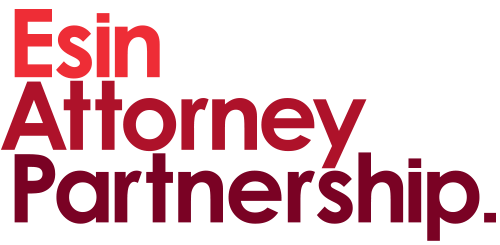![]() Click the button to listen to our legal alert now!
Click the button to listen to our legal alert now!
In the recent weeks, the Turkish Pharmaceuticals and Medical Devices Authority (TİTCK) published the (i) Guideline to Good Pharmacovigilance (IFU) Module X — Premarketing Benefit/Risk Assessment, (ii) Guideline to Good Pharmacovigilance (IFU) Module XI — Post-marketing Benefit/Risk Assessment and (iii) Draft Guideline on the Use of Health Claims.
Please click on the link below for our specific notes regarding the recent developments:
What do the Guideline to Good Pharmacovigilance (IFU) Module X — Premarketing Benefit/Risk Assessment and the Guideline to Good Pharmacovigilance (IFU) Module XI — Post-marketing Benefit/Risk Assessment introduce?
What does the Draft Guideline on the Use of Health Claims introduce?
What do the Guideline to Good Pharmacovigilance (IFU) Module X — Premarketing Benefit/Risk Assessment and the Guideline to Good Pharmacovigilance (IFU) Module XI — Post-marketing Benefit/Risk Assessment introduce?
New Development
On 20 June 2022, the TİTCK published the Guideline to Good Pharmacovigilance (IFU) Module X — Premarketing Benefit/Risk Assessment and the Guideline to Good Pharmacovigilance (IFU) Module XI — Post-marketing Benefit/Risk Assessment. The said guidelines aim to shed light on benefit/risk assessment, remove ambiguities and guide marketing authorization holders to ensure consistency and transparency of benefit/risk assessment and to facilitate decision-making. In this context, the guidelines set forth the sections included in the benefit/risk assessment, the purpose of each section and the points to be considered along with various examples.
The Guideline to Good Pharmacovigilance (IFU) Module X — Premarketing Benefit/Risk Assessment is available here. The Guideline to Good Pharmacovigilance (IFU) Module XI — Post-marketing Benefit/Risk Assessment is available here (in Turkish).
What’s New?
Module X – Premarketing Benefit/Risk Assessment Guideline
In the premarketing benefit/risk assessment, the acceptable benefits and risks should be briefly summarized along with the background of the disease, the course of treatment and the therapeutic indication.
In the evaluation, it is important to identify the key findings and main evidence and uncertainties rather than the technical details of testing and research. Secondly, the important benefits and risks should be compared with each other in the specific therapeutic context, and the principles, relationships between data and outcomes and unresolved issues about the benefit/risk balance must be explained. The assessors must be objective and clear regarding the evidence used to support the conclusions.
The assessment should identify benefits as well as unresolved issues and uncertainties and their implications for the balance assessment. In addition, information such as important risks, probability of their occurrence, severity and the period of adverse events should be included.
The benefit/risk balance should be evaluated to compare the benefits and risks described in the evaluation with alternative treatments or interventions and whether the benefit/risk balance is positive in the specified target population(s). The amount of evidence available on the benefit/risk balance, the perspectives of different stakeholders such as patients and physicians and other factors regarding the benefit/risk balance must be clarified.
Module XI — Post-marketing Benefit/Risk Assessment Guideline
The guideline summarizes the way that the information the TİTCK generally requests from the marketing authorization holders as part of the benefit/risk assessment should be arranged. However, the TİTCK can still make additional information requests to the marketing authorization holders. The relevant marketing authorization holders are only responsible for providing evidence of the benefit/risk assessment for their medicine.
In the post-marketing benefit/risk assessment, the use of the medicine, previous safety interventions, diseases for which it is indicated, background information, information such as the relevant legislation and registration dates, current risk minimization strategies, exposure estimations, information on diseases and conditions specific to Turkey and other treatment alternatives should be included.
In addition, benefits and risks should be characterized separately and discussed comparatively and the benefit/risk profile should be evaluated. In this context, the main benefits and key risks of the medicine should be summarized and the quality of the evidence should be discussed.
What does the Draft Guideline on the Use of Health Claims introduce?
New Development
In the Draft Guideline on the Use of Health Claims, published on 20 June 2022, the TİTCK regulates the procedures and principles regarding the use of health claims in products offered to the end consumer.
Stakeholders can submit their opinions via bdud.saglikbeyani@titck.gov.tr until 1 August 2022.
The draft guideline is available here (in Turkish).
What’s New?
As per the draft guideline, health claims used in the label, promotion and advertisement of foods placed on the market should not be false, misleading or cause doubt or concern and they should be understandable to average consumer. Equivalent expressions that do not change and/or reinforce the meaning can be used instead of the health claims. The draft guideline sets forth examples on the expressions that can and cannot be used.
In accordance with the Regulation on the Use of Health Claims, the trademark, name or label images of the foods that are suitable to use the health claim can include the health claim provided that it is related and limited to the health claim used. No application to the TİTCK is required for such use; however, the responsibility lies with the food business operator. Images on the label, promotion and advertisements that can be interpreted as health claims can be used provided that the relevant food meets the claim and does not create concerns for the consumer.
Permitted health claims or the recommendations in the draft guideline cannot be modified. However, abbreviated expressions can be used on the label as long as they do not change or strengthen the meaning of the health claim and on the condition that the long form of the health claim is also provided along with the abbreviation.
The draft guideline also sets forth explanations and examples regarding the health claims on the development and health of children, strictly prohibited health claims and evaluation of compliance with the nutrient profile.
In new health claim applications, upon the request of the applicant, the TİTCK can provide data protection by limiting the use of a registered health claim for five years to the benefit of the applicant. In this context, the next applicant will not be able to refer to the data registered by the previous applicant before the five-year period expires and the relevant health claim is included in the annex to the guideline.
Conclusion
The TİTCK continues to provide guidance for companies working in the healthcare industry. Companies should carefully review the guidelines and take the necessary actions to ensure compliance.





